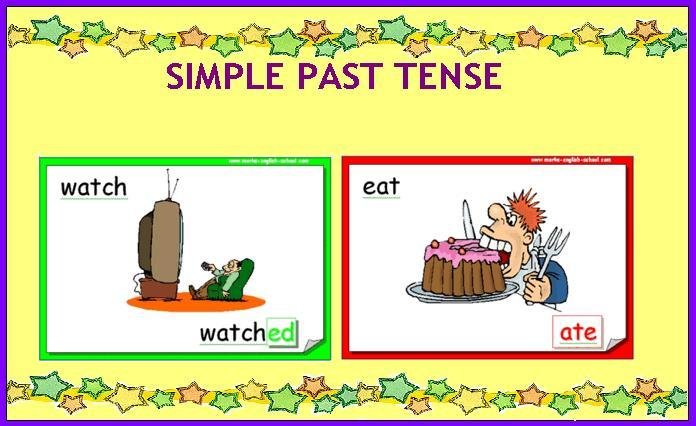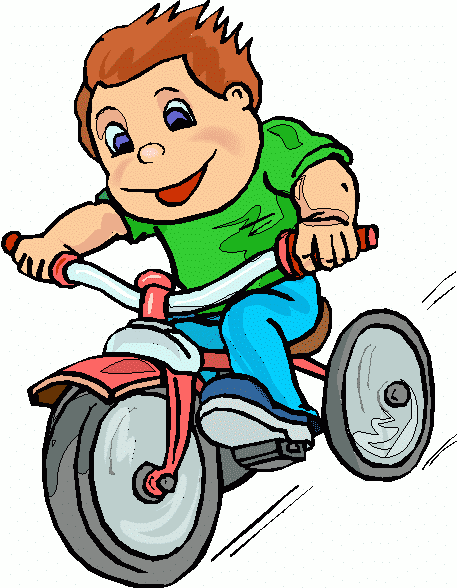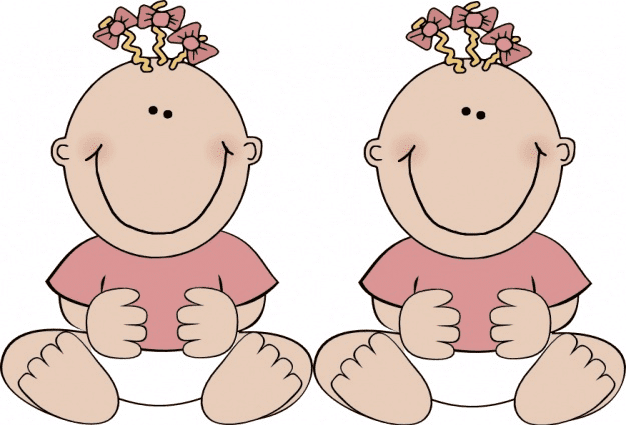WHAT IS A VERB?
Many verbs are doing words. The tense of the verb tells us when the action takes place. Verbs expresses time by the use of tenses. A verb links or joins the subject of sentence (often a noun or a pronoun) with a noun, a pronoun or an adjective. The verb tenses you should know are: present, past and future tense.
The PRESENT TENSE of a Verb
Verbs in the present tense lets us know what is happening now, what someone or something is doing now. It may be written in two ways: simply with one verb or with two verbs (using a helper verb)
The sentences above shows that this is happening now, so the verb is in the present tense.
The second sentence shows how to use the helper verb to be. The main verb always ends with ing. This is also known as the present continuous.
The Present Continuous and the Present Participle
The present participle is formed by adding -ing to the base form of a verb.
Let look at the word stroll. It is the base form of the verb to stroll. The present participle of stroll is strolling.
The present participles appear in continuous verb tenses, which show when a verb or action was/is in the process of happening.
- Present Continuous: They are strolling through the park.
- Past continuous: They were strolling through the park.
- Future progressive They will be strolling through the park.
The PAST TENSE of a Verb
The same sentence can be written in the past tense. It tells us what someone or something did in the past. We add ed to the end of regular verbs to make the past tense.
Examples: Yesterday, Sam and Jane strolled through the park.
More examples: Yesterday, he watched a lot of television.
Marcus ate the entire cake.
Irregular Past Tense
However, some verbs, irregular verbs, do not follow this rule.
PAST PARTICIPLE
Past Participle: Milo had broken his leg speeding down the hill.
Avoid using the past participle instead of the past tense or the past tense instead of the past participle.
Example: I seen him. He done that. Have you broke it? He had went. < All theses are wrong>.
Practice using the past tense and past participle correctly. Here is a list you should read and learn.
The FUTURE TENSE of a verb
We use the future tense to tell about what will happen in the future.
Note: In traditional grammar, the auxiliary verb shall is used with the pronouns I and we to make the future tense.
Example:
Jenny exclaimed, “I shall visit my cousin in Barbados, next week. You should come too.”
Patrice replied, “That sounds like a good idea.”
” Well, we shall visit my cousin together.” Jenny smiled. Then she sipped her mint tea. “My cousin will be very happy to see us.”
“Oh, she will be indeed.”
We use the auxiliary verb will with the pronouns you, he, she, it or they to make the future tense.
SUBJECT AND VERB AGREEMENT
Every sentence has a subject. The subject is the main person or thing in the sentence. Every sentence must have a verb. The subject and verb must agree with each other and sound right.
Example:
Patricia is meeting Jenny at the diner today.
The women are talking.
The women are laughing.
The women are drinking tea.
The subject is in the plural. The subject and verb must agree. The verb must be written in the plural.
VERB FAMILIES
All verbs belong to a family.
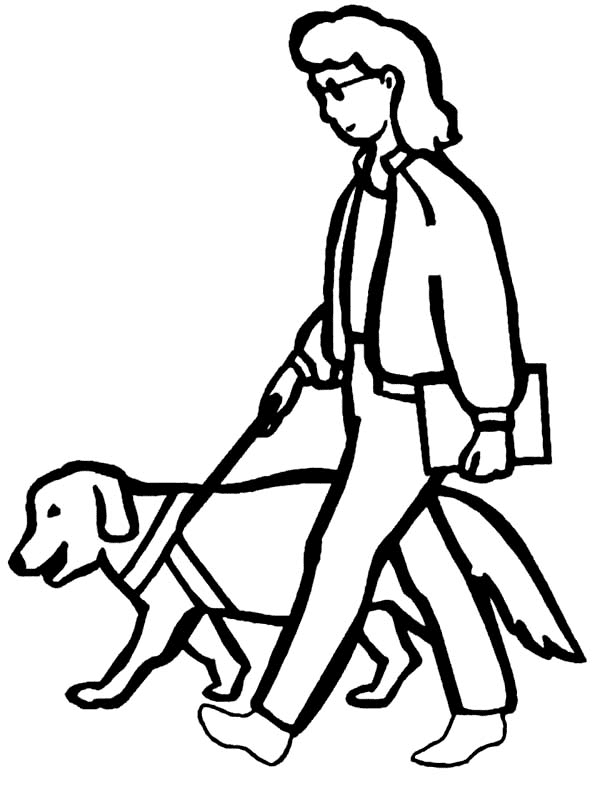
Example: [family name] to stroll —>[verbs in the family] stroll, strolls, strolling, strolled
THE VERB ‘TO BE’
The verb ‘to be‘ is used very often. Many verbs are doing words, but this [to be] is a being word. It tells what someone is or something is.
Since the verb ‘to be‘ is popular family name, here are the verbs in the family: am, is, are.
ACTIVITY: Become aware of Strong Verbs in this interactive activity for older children.
VERBS WITH NEGATIVE WORDS
A negative word is a word used used to express a negation of another word, a thought or an idea.
They are: no, not, none, nothing, never, nobody, nowhere, neither.
These negative words appear between the main verb and a helping verb.
For example:
However, you must be careful where you place these negative words. Let’s look at some more.
- We never have fun on the weekend.
- I do not scare easily.
- One should never kick a ball inside the house.
- I did not read the book.
Can you think of more sentences using negative words?
You should try to avoid the double negative. eg.
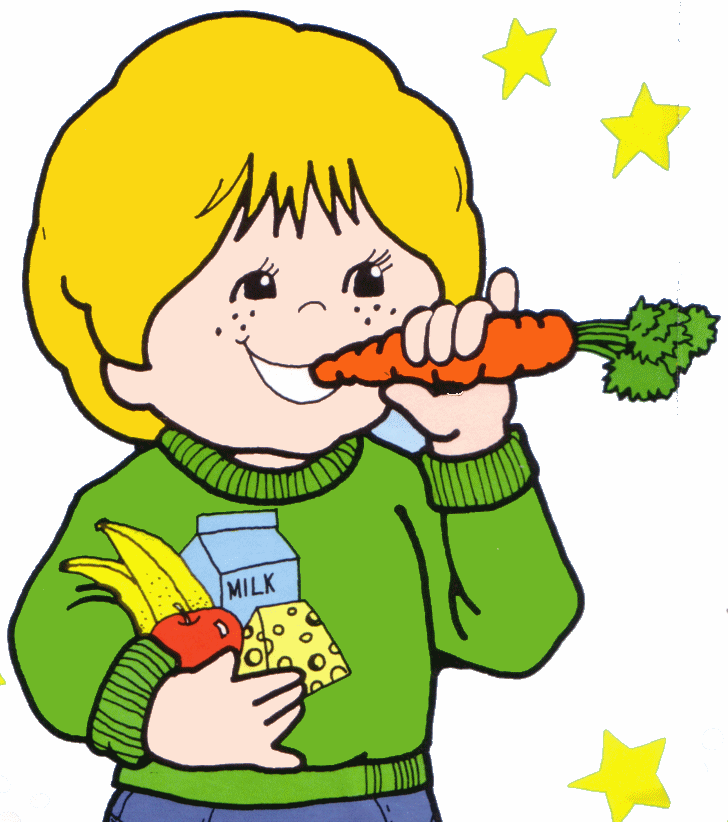
If you don’t eat your vegetables, you would not get no juice.
This should be : If you don’t eat your vegetables, you would not get any juice.
INTERROGATIVE AND IMPERATIVE VERBS
We use the interrogative form of a verb to ask questions; and the imperative form to give orders, commands or to make requests.
Example: “Who do you want to speak to?” [Interrogative]
Example: “Please, repeat what you said.” [Imperative]
ACTIVE AND PASSIVE VERBS
Verbs are active (or in the active voice) when the subject of the sentence performs the action. The verb is passive (or in the passive voice)when the subject of the sentence has the action done to it.
Example: The women drank hot cups of mint tea. [ active verb]
The subject performs the action in above sentence.
Example: Hot cups of mint tea were drunk by the women. [passive verb]
The subject has the action done to the women.
AUXILIARY VERBS
A verb in a sentence may consist of more than one word. The word that accompanies the main verb is referred to as the helping or auxiliary verbs. We use an auxiliary or helper verb with the main verb to help it work properly.
The verb ‘to be‘ is an auxiliary verb. We use it as: am, is, and are.
have“. It tells us about an action in the past. An auxiliary verb sometimes gives us more information about the tense of the verb.

Example: “How do mathematicians scold their children? ‘I have told you n times, I have told you n+1 times'” .
In the future tense, we usually use the auxiliary verb shall (after I and we) and will (after you, he, she, it or they). If you want to make a strong statement, use them the other way around.
Some more auxiliary verbs are: must, can, and may.
Examples:
I can ride my bicycle. (‘can‘ indicates ‘ability’ , ‘power’ or ‘skill’ to do something)
May I go outside to ride my bicycle. (‘may‘ expresses ‘permission or possibility’)
You may go as far as the park, but remember you can not ride down the hill.
CONDITIONAL VERBS
A conditional verb tells you the action might happen or might have happened because it depend on someone or something else.
Example: “If you jump of the bridge in Paris you would be in Seine”.
” A mathematician wanders back home at 3 a.m. He proceeds to get an earful from his wife.
“You are late!” she yells. “You said you would be home by 11:45!”
“Actually,” the mathematician replies coolly, ” I said I would be home by a quarter to 12.”
Some auxiliary verbs also tell you if a verb is conditional. They are: should, would, could and might.
Example:
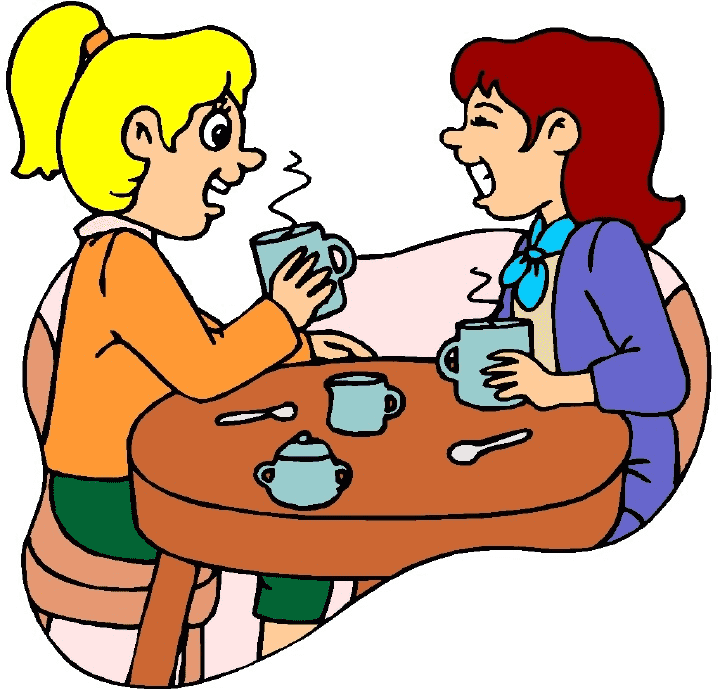
Example: “She might faint when she sees me.” Patrice giggled.
TRANSITIVE AND INTRANSITIVE VERBS
A transitive verb is followed by a word or words that answer questions ‘what’ and ‘whom’. An intransitive verb does not answer the question what and whom.
Transitive Verb example:
The boy spoke the words to challenge the girls. [the noun words answers the question what?)
Intransitive Verb example:
The boy spoke clearly. [The verb is followed by a word that tells how.]



